Now that the summer heat is tapering off and there’s hope of cooler temperatures approaching in southeast Louisiana, I can look to trimming my deciduous trees back. I’m looking to find new and improved silhouettes on some of my trees that I’m anticipating for fall color. Taking the time to trim back for shape and thinning out the canopy of deciduous trees can balance their energy as well. Once the chlorophyll in the leaves begin to retract we want the color change to be even otherwise the tree will shed leaves while still holding color on other parts of it’s canopy.
Alternatively, we can use the fall color change as an observation on the health of any given branch on the tree. In some cases, a weaker branch will change color and shed sooner. This could indicate that that particular branch is weak from root issues, over/under fertilizing methods, or unbalanced energy to the rest of the tree. Leaves that develop dried burnt tip and then color change should be addressed differently as well. This symptom could indicate early signs of root rot. (If our watering techniques are not the issue.)
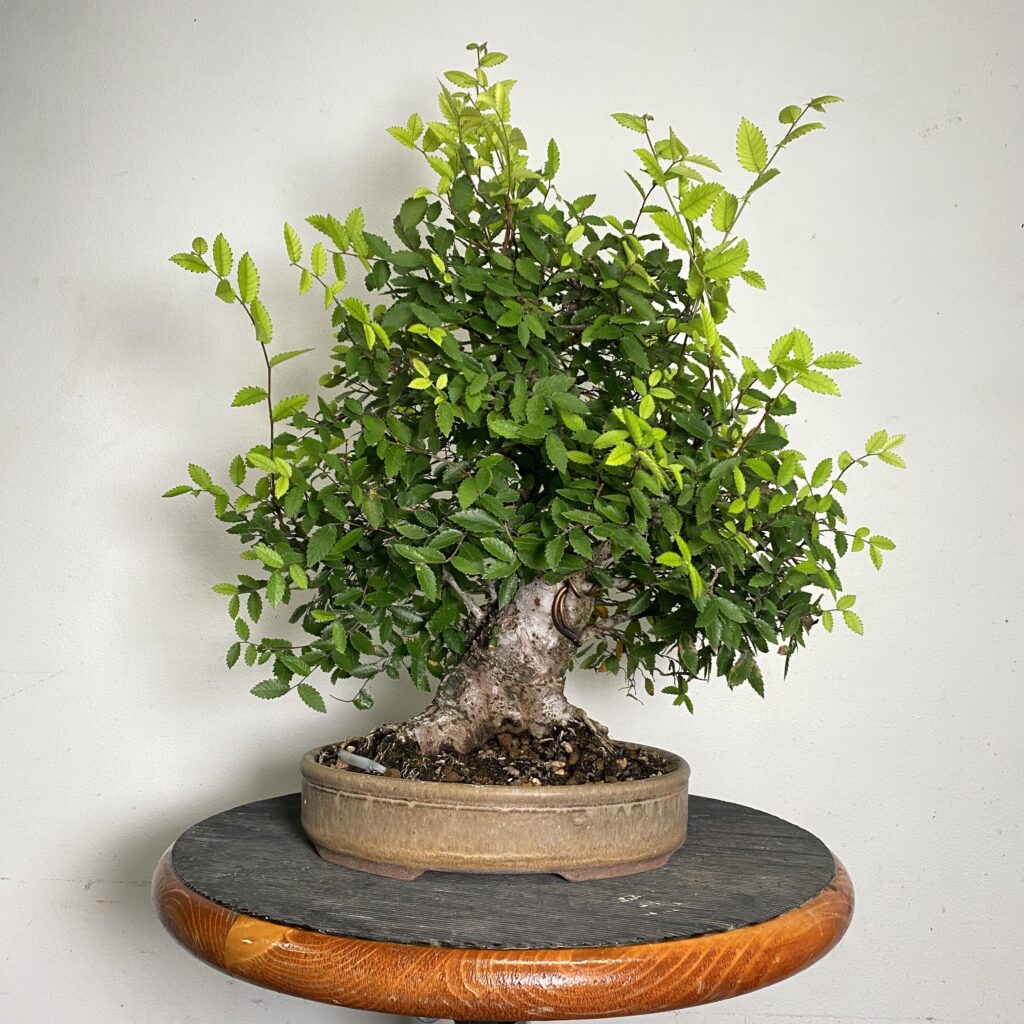
This stout little tree is a winged elm, ulmus alata, that was collected by a buddy of mine a good while back. I’ve featured this tree in a lot of my social media posts. It’s one of my favorite elms and it alone has inspired me to take the species much more seriously as bonsai material.
U. alata, is native to southeast Louisiana. They are considered a “trash tree” here and can be usually found growing in unwanted areas in our gardens, such as what a weed would do. If a tree is showing us so much intent to survive then why would we not want this as a piece of bonsai material. These elms can obviously take the abuse.
It’s in need of haircut bad. So it’s time to go in and do the initial type of trim back that I typically do on this tree this time of year.
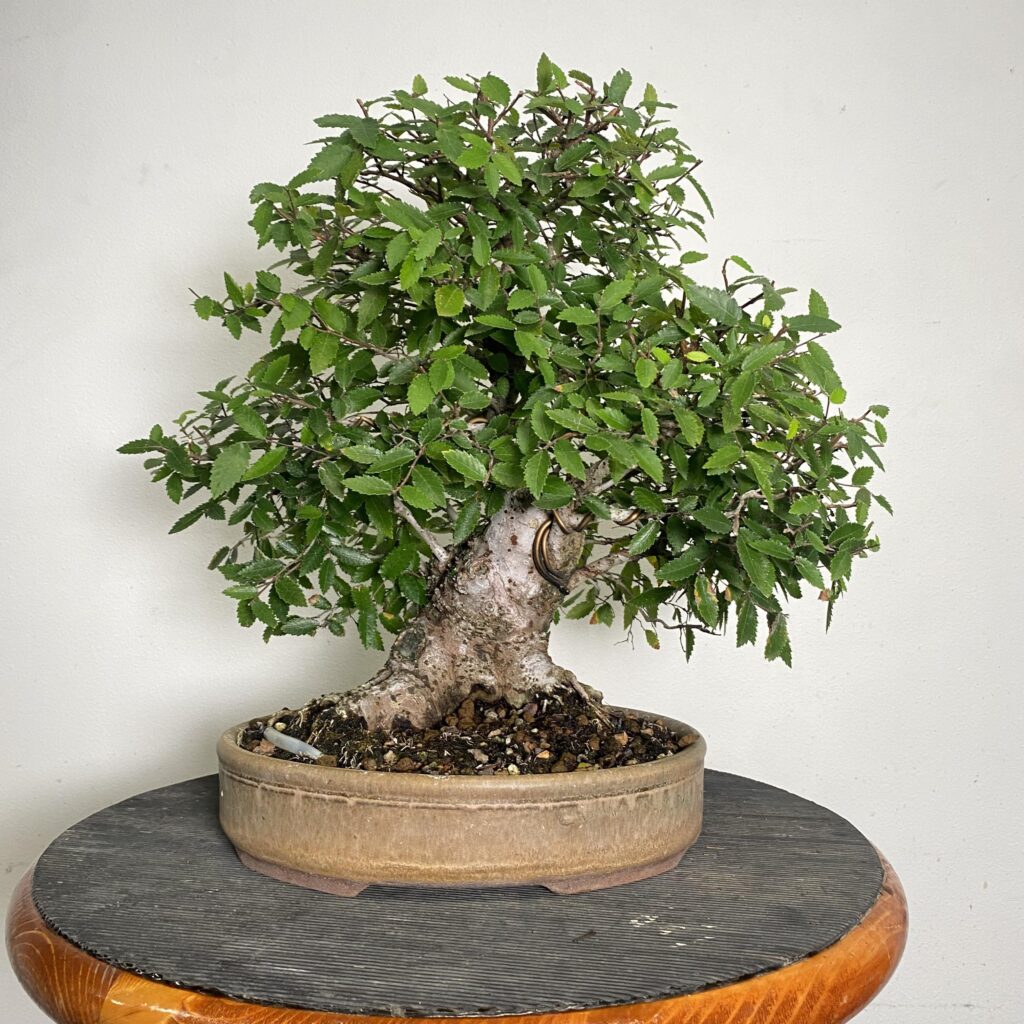
You can see that a lot of the shoots on the tree in the pervious picture were fairly chlorotic. This is because this bonsai has pushed pretty aggressively in vigor this entire year. Our spring came early this year and the temperatures were just right for all the deciduous trees to rocket into a good grow season. I’ve tried my best to only trim back my trees if they are getting close to loosing fine branching and silhouette distortion.
The main problem with tree is that I cut it back and grew it out incorrectly and have maintained an awkward trunk line for many years now. This might be more obvious from a rearview of the tree. The leaves have paneled towards the viewer do to the lack of being turning when it was growing the most during the season.
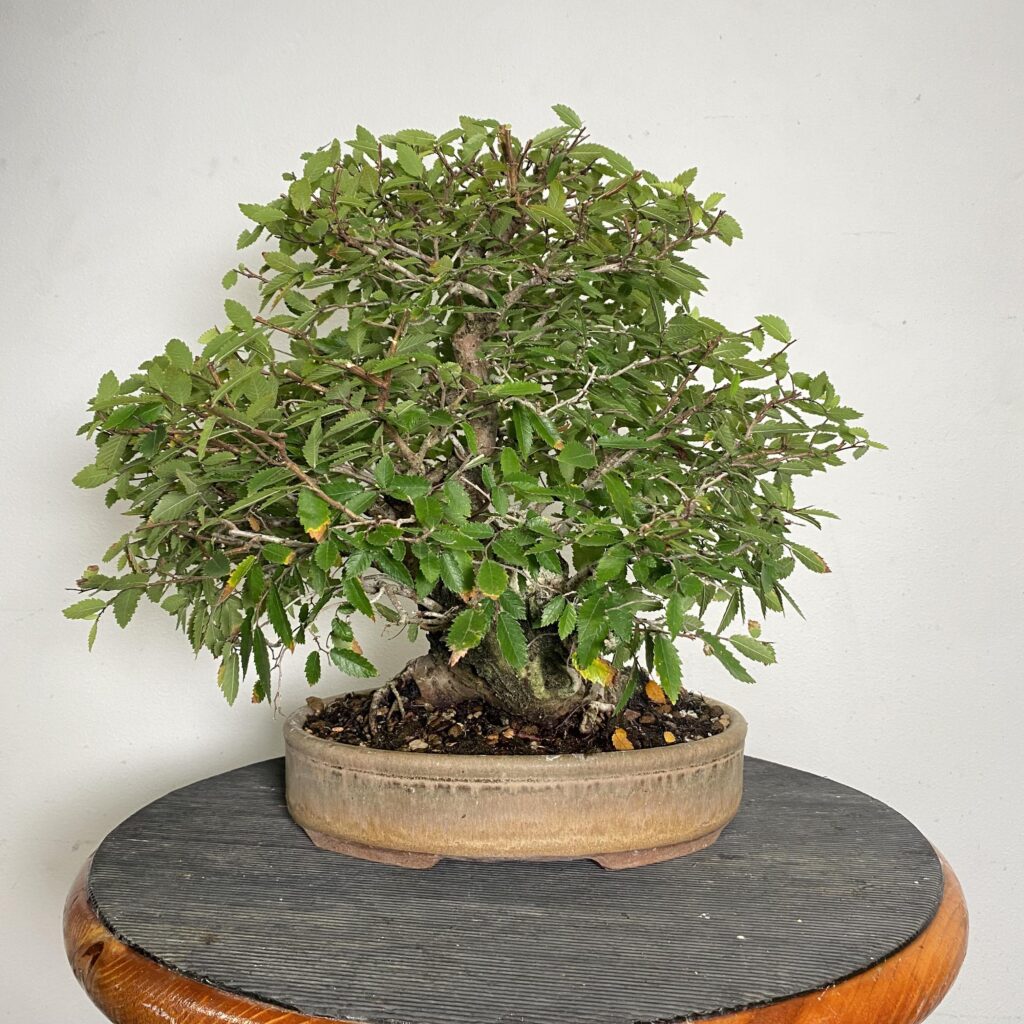
From this view you can see upper part of the trunk line is straight and not tapered compared to the fatter portion of the tachigari. This is because I developed this tree to be taller then it is currently. Instead of cutting to the proper height and re-growing it, I got ahead of myself in refinement. To see where I need to reduce the tree more I will do a thinning and a little defoliation. I cannot go to crazy with defoliation because it still around 100 degrees at the peak of the day and I do not want to set the tree into growing frenzy and severally weaken it. That’s part of the reason it was chlorotic in the earlier picture due to being partly summer dormant while attempted to back bud.
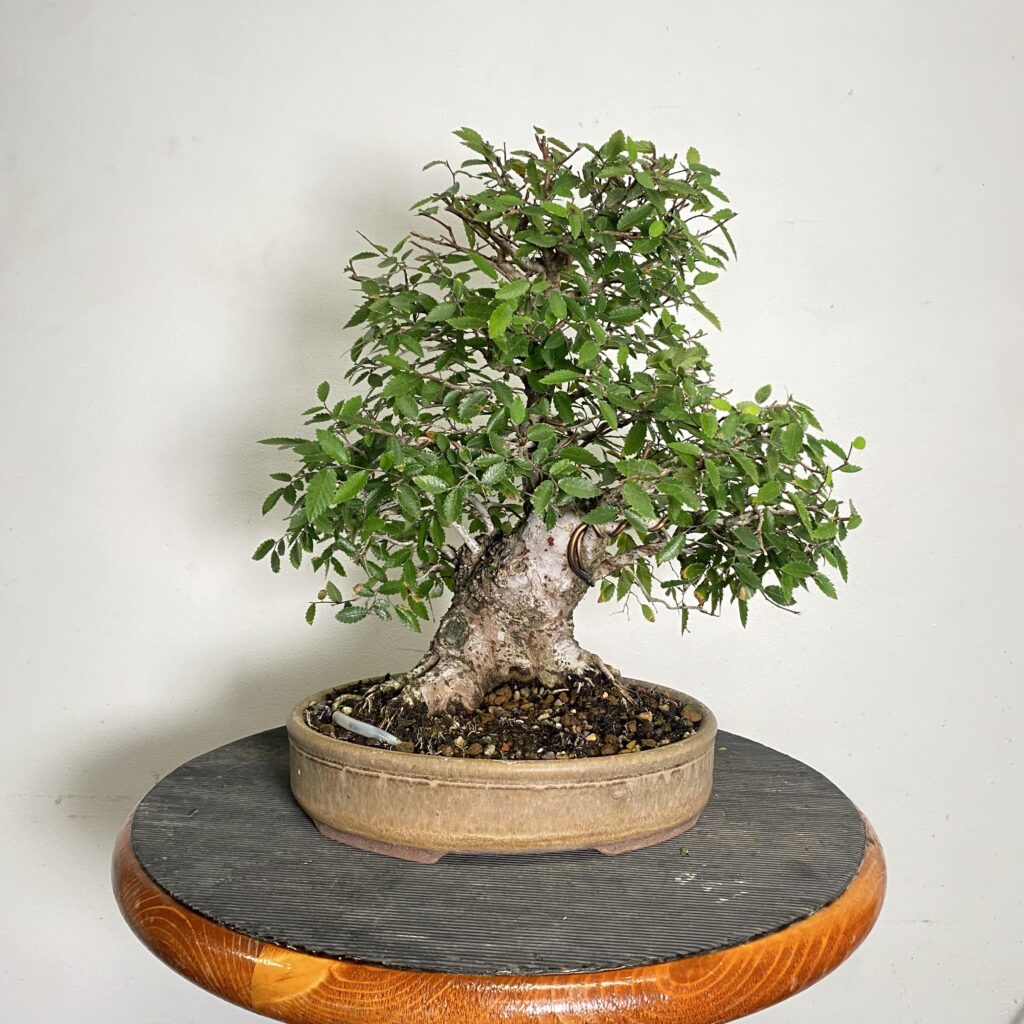
After thinning, I started to see areas where there was too coarse of branching occurring on the outer reaches of the silhouette. Some of these branches are now stubbed back. Over sized leaves and dangling heat wore foliage were removed. The problem with the too straight of a “trunk” is much more apparent now.
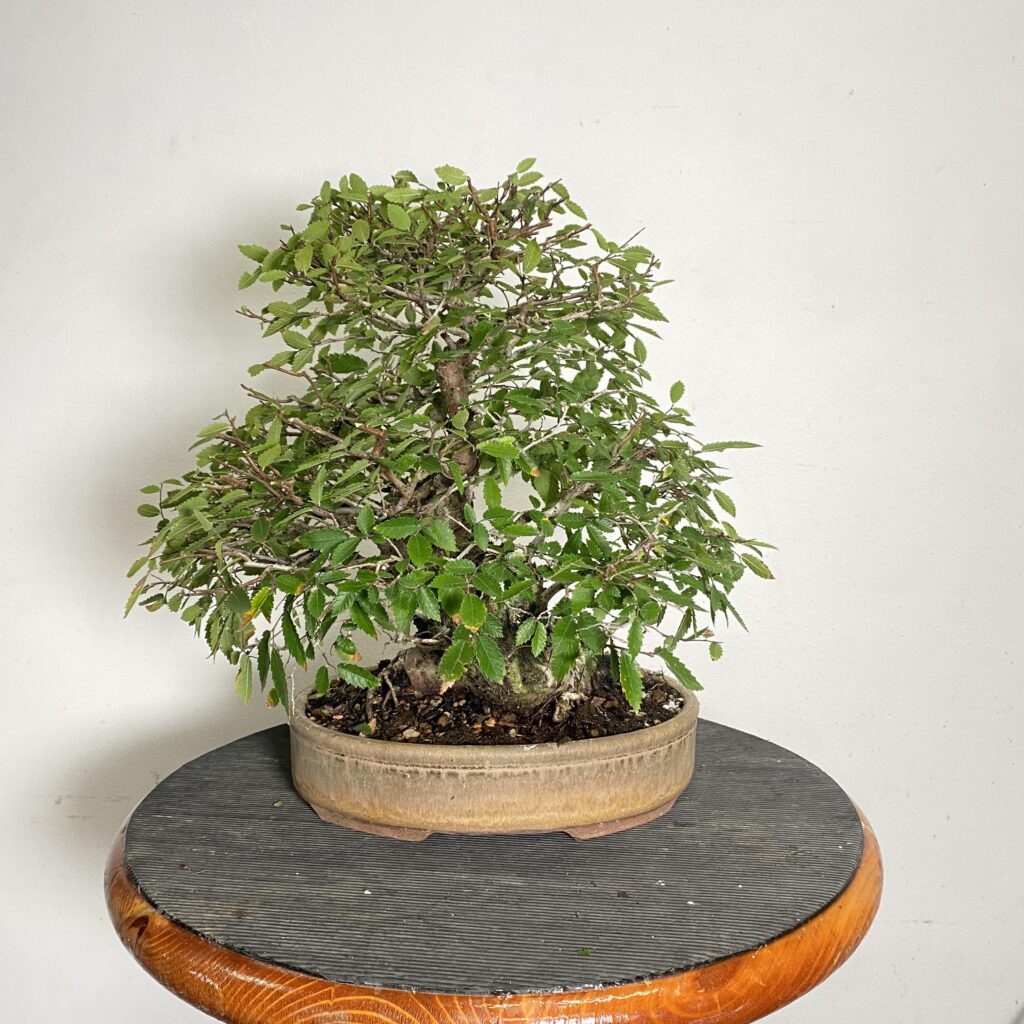
From the rearview after thinning out you can see the trunk line almost looks like another branch instead of its intended purpose. The little bit of movement that is has is right off the original chop roughly 1″ above. That’s more then enough movement to warrant me to cut back to and improve the design of this tree.
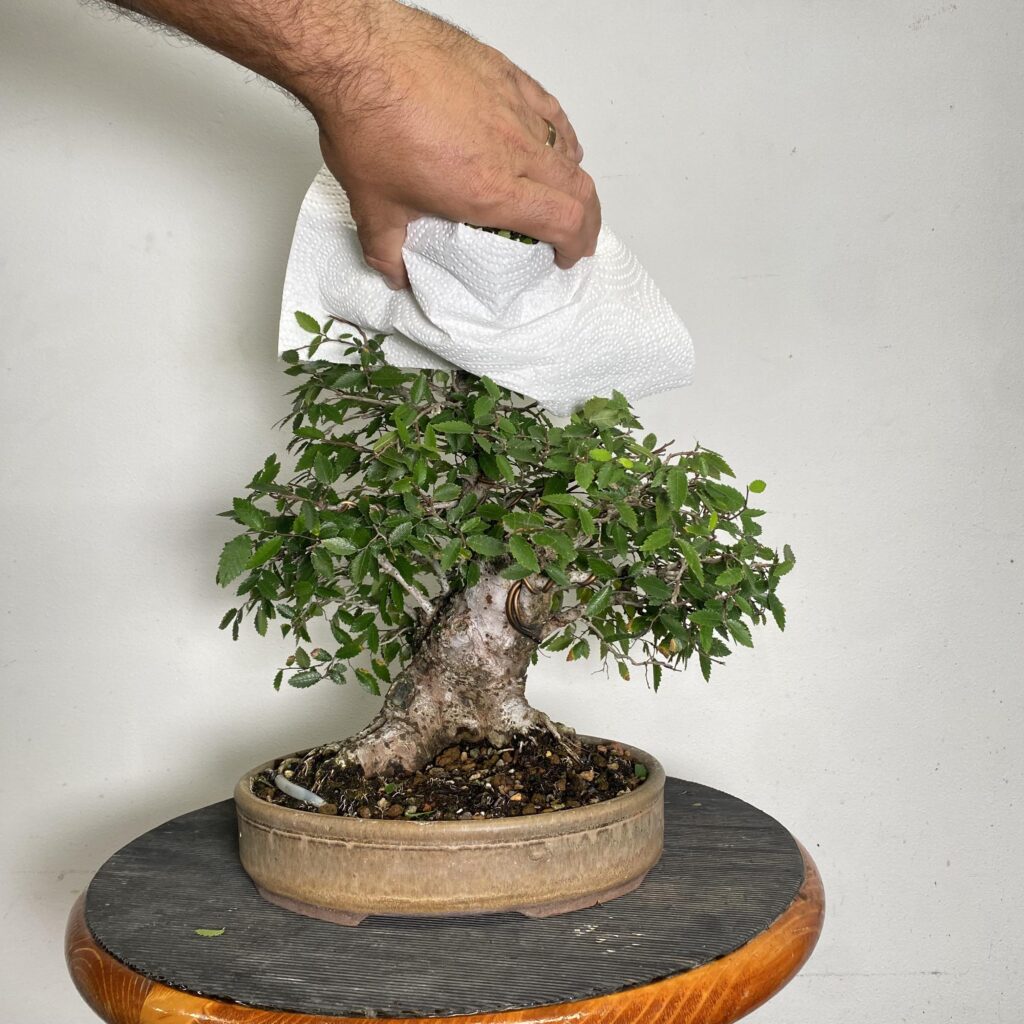
I’m simply using a paper towel to cover up the upper part of the tree to give me a sneak peak of what the cut would do to the tree’s overall shape. If I cut here I can get more bang for my buck when it comes to the proportions of the tree. This would reduce the height of the tree nearly by half though. A little history on this tree, if you look back in my earlier posts on my Facebook page you’ll see this tree with much more height. I jokingly call this my shrinking bonsai. As my taste evolves for sumo style trees the shorter this guy gets.
Instead of cutting it shorter another approach could be up potting it and then letting the top branch grow wild and thicken. Winged elms take a little more time to thicken then other varieties of elm so this could take up to 5 or so years to get it to what I’m imagining. I have other trees growing out and getting more proper cut backs and I do not feel putting this tree on the back burner like that. So, I will just be reducing it again which is totally a fine thing to do. Going above and beyond to fix a flaw on a tree like is not of interest to me. I would rather let the design age without having to backtrack too much. It will also be a way I can kind of look into the past of how I used to approach developing trees.
Note: I will not being cutting the top down on this tree until early spring next year. It another winged elm will be topped as well at the same time for a future article.
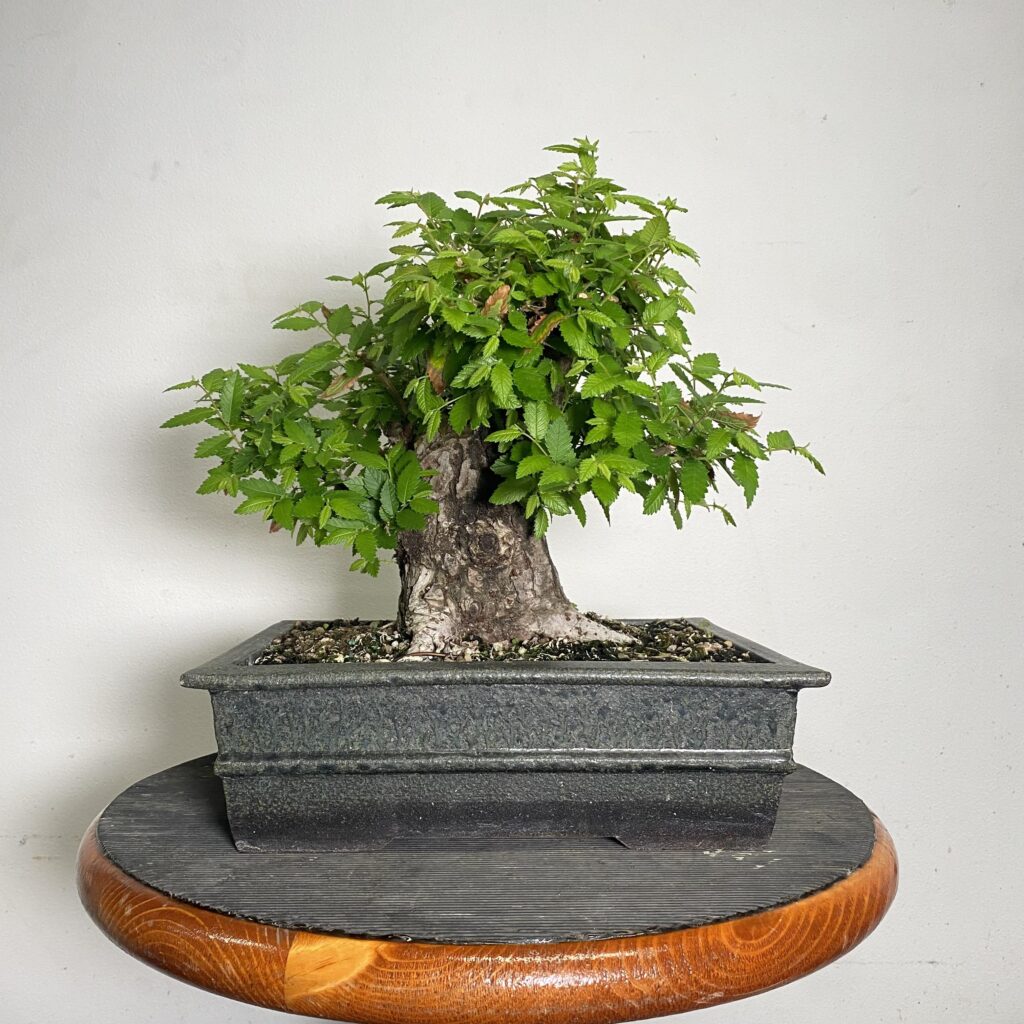
This is a different elm to the one pictured above. It was cut back from being blown out a month ago. It is back budding profusely. It is not very easy to see at the moment but I allowed the new leader on this tree grow much thicker then the other chuhin size tree above. The taper is much more believable and also the chop wound is much more on track to healing seamlessly. I carved the chop very similarly to how I treat bald cypress pre-bonsai.
Chuhin size bonsai indicates bonsai that are right above the height and girth classification of shohin. Shohin trees can be up to 8-10″ depending on container and presentation. Chuhin trees appear to be just a bit too big, with chunkier proportions and can stand up to 12″ tall in some cases.
There are is so much to learn with developing sumo or 1/1 ratio trees. I’m just at the beginning of my journey with experimenting with them. Like a friend has been telling me, your more developed trees are just an imprint of what you learned before what you are practicing now in bonsai. Your trees should be developed differently then the first day you picked up your bonsai shears. Bonsai is truly a progress art.
-Evan
